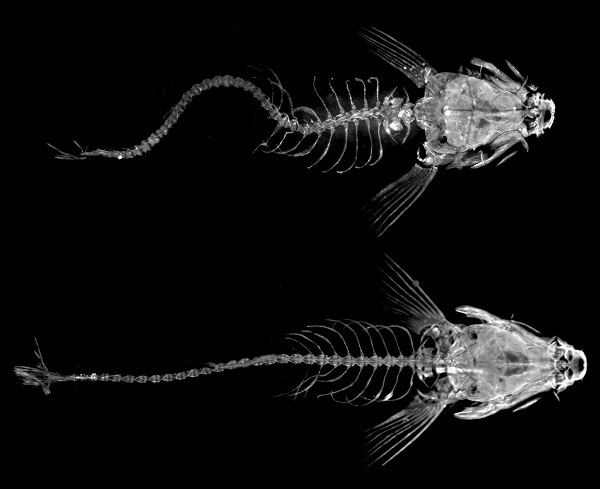Researchers discover an immune response associated with the development of idiopathic scoliosis (IS) in zebrafish
Summary:
Researchers at The Hospital for Sick Children (SickKids) have determined that neuroinflammatory signals drive spinal curve formation in zebrafish, and can be suppressed using common drugs like NAC.
Idiopathic scoliosis (IS) is a complex genetic disorder that affects approximately 4 per cent of children worldwide, yet its underlying biological cause remains unknown.
Researchers at The Hospital for Sick Children (SickKids) have determined that neuroinflammatory signals, the signals that trigger inflammation in the spinal cord, drive spinal curve formation in zebrafish. The team also found that suppressing these signals with common drugs like N-acetylcysteine (NAC) or aspirin blocked the formation of spinal curves or reduced the severity of scoliosis after onset. The study was published in Science Advances on December 12, 2018 and is the first study to establish a link between neuroinflammatory signals and spinal curve formation.
Idiopathic scoliosis is characterized by three-dimensional curves in the spine that typically arise during adolescence. In some cases, it can cause chronic back pain, disfigurement and functional disability.
In addition to affecting humans worldwide, IS is also a common deformity found among fish. The zebrafish, in particular, has emerged as a consistent model for human scoliosis and other congenital defects. In this study, a laboratory team led by Dr. Brian Ciruna, Senior Scientist and Head of the Developmental & Stem Cell Biology Program at SickKids, examined zebrafish models to determine the biological cause of IS.
The lab team looked for genes and genetic pathways that were abnormally expressed upon the development of spinal curvature. Surprisingly, they found that immune cells associated with inflammation accumulated at the site of spinal curvature, indicating a strong immune response associated with scoliosis.

Using genetic tools, the team also discovered that activating pro-inflammatory signals in the spinal cord could induce scoliosis in healthy zebrafish. When these signals were blocked by administering NAC, an over-the-counter supplement with both anti-oxidant and anti-inflammatory activities, the incidence and severity of scoliosis was significantly reduced.
“Traditionally, scoliosis has been considered to be a disease affecting bone, cartilage, or neuromuscular activities. We were surprised to find an immune response associated with IS,” says Dr. Ciruna.

Currently, management and treatment of scoliosis is limited to full-time rigid bracewear, or invasive surgery. Wearing a brace can cause psychosocial challenges in patients, including negative body image and self-esteem. It does not correct curvature; it only minimizes the risk of curve progression. Surgery is the only corrective treatment but is typically only considered for patients with spinal curves of approximately 50 degrees.
“Our study has revealed that simple and safe immunomodulating therapies like NAC may be effective in managing scoliosis,” says Dr. Ciruna, who is also a Professor in the Department of Molecular Genetics at the University of Toronto. “If our findings translate to humans, this could have a profound impact on the treatment of idiopathic scoliosis.”
Before clinical applications are considered, a definitive link between neuroinflammation and scoliosis in humans must be established. Currently, Dr. Ciruna’s team is exploring how pro-inflammatory signals contribute to the development of human spines. The team hopes to use the biological insights gained from zebrafish research to inform future studies.
The lab has also initiated a study in collaboration with SickKids’ Spine Program to explore the genetic causes of scoliosis in IS patients. They plan to collaborate with Dr. David Lebel, an Orthopaedic Surgeon at SickKids; to examine the possible association of inflammatory signals with the onset and progression of spinal curvature in IS patients.
This work was supported by the Canadian Institutes of Health Research (CIHR) and the SickKids Foundation. It is an example of how SickKids is making Ontario healthier, wealthier and smarter.

